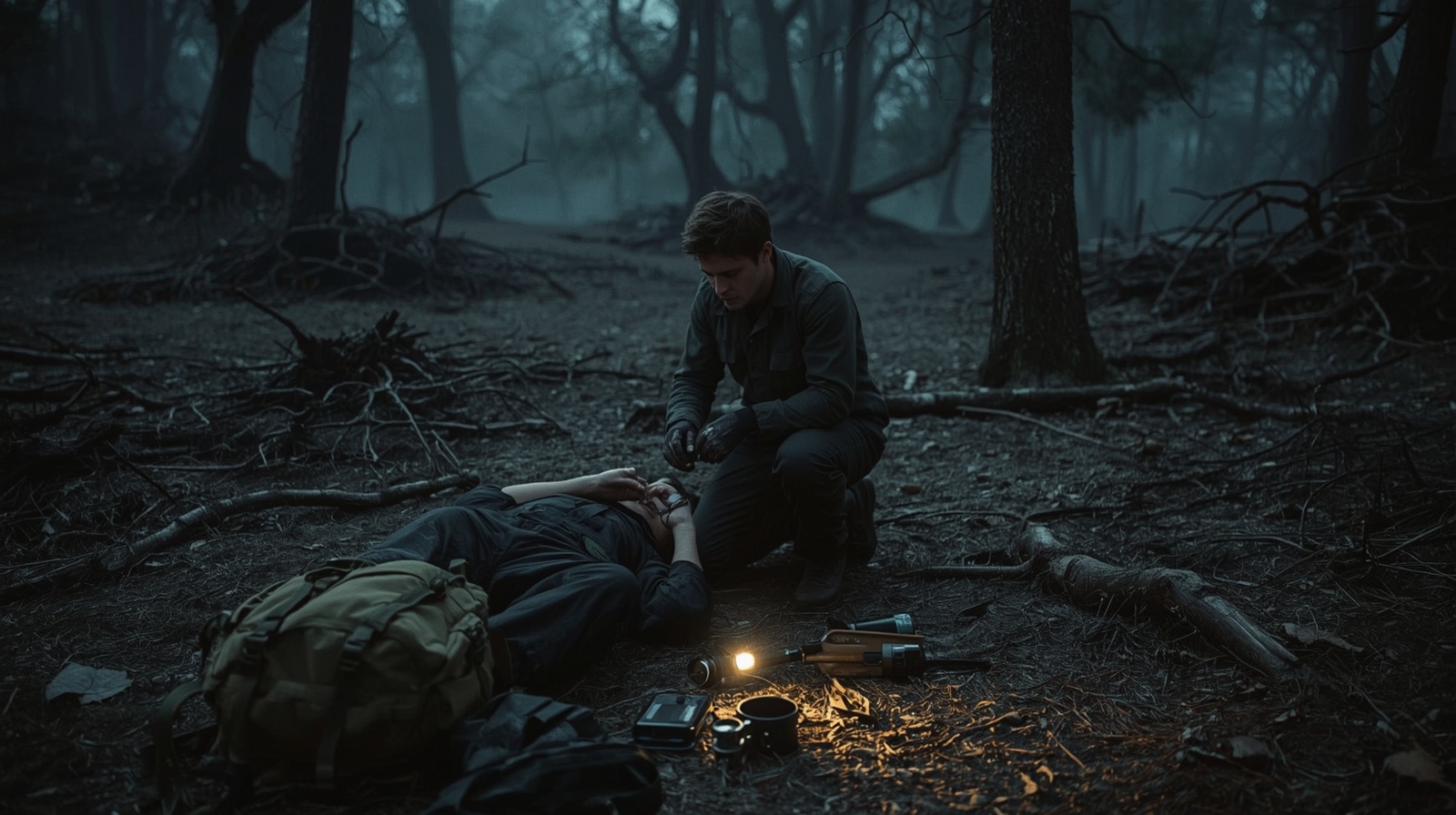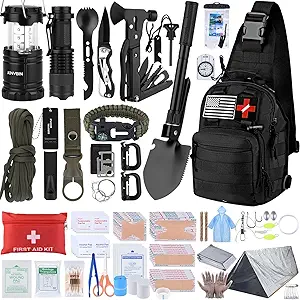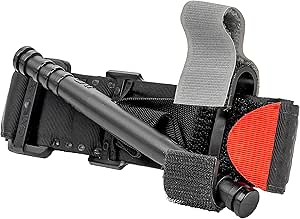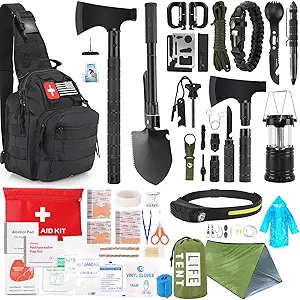Tactical First-Aid Skills Every Outdoor Enthusiast Should Know

Tactical First-Aid Skills Every Outdoor Enthusiast Should Know
Basics of Tactical First-Aid
Understanding the Fundamentals
Tactical first-aid is not just about bandaging a wound; it’s about making rapid, informed decisions that could save a life in critical moments. Whether you’re hiking, camping, or engaging in any outdoor activity, knowing how to assess a situation and apply the right treatment is paramount. The foundation of tactical first-aid revolves around the ABCDE approach: Airway, Breathing, Circulation, Disability, and Exposure/Environment. This method helps prioritize actions in emergency scenarios, ensuring the most critical aspects of care are addressed first.
Key Components of a Tactical First-Aid Kit
Your first-aid kit is perhaps your most vital piece of equipment. Unlike standard kits, a tactical first-aid kit should be tailored to the environment and the specific risks associated with your outdoor activities. Essential items include:
- Tourniquets for controlling severe bleeding
- Pressure dressings
- Antiseptic wipes
- Items for creating splints
Remember, the effectiveness of your kit relies not just on what’s in it but also on your ability to use these items properly.
Common Mistakes to Avoid
A common pitfall is overpacking the first-aid kit with unnecessary items, which can make finding essential tools quickly a challenge. Additionally, neglecting to familiarize yourself with each item’s use before heading out is a mistake that can cost precious time in an emergency. Regularly revising and practicing with your kit is as important as having it with you.
Assessing and Responding to Injuries
Step-by-Step Injury Assessment
When faced with an injury, a systematic assessment is your first step. Begin with ensuring the scene is safe for you and the injured party, then follow the ABCDE approach. For instance, if someone has fallen and is unresponsive, ensuring their airway is clear is your immediate priority. This step-by-step method helps prevent oversight and ensures comprehensive care.
Handling Common Outdoor Injuries
Outdoor activities often lead to specific types of injuries, such as sprains, cuts, and fractures. Knowing how to handle these common issues can make a significant difference in the outcome. Strategies include:
- For sprains and strains, the RICE method (Rest, Ice, Compression, Elevation) is effective.
- For cuts, cleaning the wound and applying pressure to stop bleeding is crucial before bandaging.
When to Seek Professional Help
Not all injuries can be managed on the field. Recognizing the signs that professional medical help is needed is a critical skill. For example, if a person is experiencing severe allergic reactions, has sustained a major trauma, or shows signs of a concussion, immediate evacuation and professional medical intervention are necessary.
Preparing for Specific Outdoor Emergencies
Hypothermia and Heatstroke
Temperature-related emergencies like hypothermia and heatstroke are common in outdoor settings. Knowing the signs and the initial steps to take can prevent these conditions from worsening. For hypothermia, warming the person gradually and avoiding direct heat sources is key. For heatstroke, moving the person to a shaded area and initiating cooling strategies is crucial.
Wildlife Encounters
Encountering wildlife is a reality in many outdoor adventures. While most wildlife avoids humans, knowing how to react if you come across a potentially dangerous animal is important. Tips include:
- Making noise to alert animals of your presence
- Knowing how to use bear spray can prevent most negative encounters.
Managing Traumatic Injuries in the Wild
Dealing with Severe Bleeding
When you’re miles from medical help, controlling severe bleeding is a skill that can truly save a life. If someone is bleeding heavily, your first step is to apply pressure directly to the wound with a clean cloth or bandage. If the bleeding doesn’t stop, a tourniquet may be necessary. Place the tourniquet a few inches above the wound, between the wound and the heart, and tighten it until the bleeding stops. It’s crucial to note the time the tourniquet was applied, as prolonged use can lead to tissue damage.
Immobilizing Fractures
In the event of a bone fracture, immobilization is key to prevent further injury. Use splints made from rigid materials available in your surroundings, like sticks or trekking poles, and secure them with bandages or cloth strips. The splint should extend beyond the joints above and below the fracture. Remember, the goal is immobilization, not correction of the bone alignment. After splinting, keep the injured limb elevated, if possible, to reduce swelling.
Handling Burns and Blisters
Burns and blisters are common injuries that can turn serious if not treated properly. For burns, cool the area immediately with running water, then cover it with a sterile dressing. Don’t use ice, as it can cause further tissue damage. For blisters, if they’re small and not painful, it’s best to leave them intact. If a blister does burst, clean the area gently, apply an antibiotic ointment, and cover it with a bandage to prevent infection.
Navigating Environmental Hazards
Safe Water Consumption
Access to clean drinking water is a critical concern in the wilderness. When natural water sources are your only option, purifying the water is essential to avoid waterborne illnesses. Methods include:
- Boiling
- Using chemical purifiers
- Using filters
Always collect water from flowing sources, and avoid stagnant water, which is more likely to contain pathogens.
Avoiding Poisonous Plants
Knowledge of the local flora can prevent uncomfortable or even dangerous encounters with poisonous plants. Tips for avoiding poisonous plants include:
- Learn to identify common hazardous plants like poison ivy, oak, and sumac.
- Remember, “Leaves of three, let it be” is a good rule of thumb, but not all dangerous plants follow this pattern.
If contact occurs, wash the area with soap and water as soon as possible to remove the plant’s oils and avoid spreading the irritant.
Preparing for Weather Extremes
Sudden weather changes can pose significant risks during outdoor adventures. Always check the weather forecast before departing, but be prepared for unexpected changes. Strategies for dealing with weather extremes include:
- Dressing in layers to adapt to temperature fluctuations
- Carrying waterproof gear to stay dry
- Understanding how to build an emergency shelter using natural materials or a tarp can be life-saving if you’re caught in a storm or face an unplanned overnight stay in the wilderness.
Advanced Navigation Techniques
Using a Compass and Map
While GPS devices are invaluable tools, relying solely on electronic navigation can be risky, especially in remote areas where signals may be weak or batteries can run out. Understanding how to use a compass and read topographic maps is an indispensable skill. Practice taking bearings and triangulating your position to ensure you can always find your way, even if your electronic devices fail.
Night Navigation
Navigating in the dark presents unique challenges but is sometimes necessary. Familiarize yourself with the night sky, particularly how to identify the North Star in the Northern Hemisphere, which can help maintain your bearings. Use a headlamp with a red light to preserve night vision and minimize disruption to wildlife. When moving at night, slow down and pay extra attention to the terrain to avoid injuries.
Signaling for Help
If you find yourself lost or in an emergency situation where you need to be rescued, knowing how to signal for help is crucial. Use three of anything (whistles, fires, flashes of light, etc.) to signal distress, as this is an internationally recognized signal for help. Bright colored clothing or materials can make you more visible to rescuers, and mirrors or shiny objects can be used to reflect sunlight.
Advanced Wilderness Medicine Techniques
Managing Animal Bites and Stings
When you’re deep in the wilderness, encounters with wildlife, including snakes, spiders, and other biting or stinging creatures, are a real possibility. For snake bites, the key is to keep the victim calm and immobilized; do not attempt to suck out the venom or apply a tourniquet, as these methods can do more harm than good. Instead, wash the wound with soap and water, keep the affected limb at heart level, and seek medical help immediately. For other bites and stings, remove any stingers, clean the area, and apply a cold pack to reduce swelling.
Tackling Allergic Reactions
Allergic reactions can escalate quickly in the wilderness. Carrying antihistamines and an epinephrine auto-injector (if prescribed) is crucial for those with known severe allergies. Recognize the signs of anaphylaxis-such as difficulty breathing, hives, and swelling- and administer medication as soon as symptoms appear. Always ensure that your hiking or camping group is aware of any allergies and knows where the medication is stored and how to use it.
Psychological First Aid
The mental impact of a traumatic event or a survival situation is often underestimated. Providing psychological first aid is just as crucial as addressing physical injuries. Listen actively, offer comfort without forcing conversation, and encourage professional help if needed. Maintaining a positive attitude and fostering a sense of camaraderie can significantly affect morale and mental health during tough situations.
Expert Tips for Wilderness Survival
Prioritizing Needs
In a survival situation, prioritizing needs is essential: shelter, water, fire, and food, in that order. Your immediate concern should be finding or creating shelter to protect yourself from the elements. Next, locate a water source and purify the water. Fire is crucial for warmth, signaling, and cooking. Food is important, but you can survive several weeks without it, so focus on the first three needs first.
Navigation Without Tools
If you find yourself without a compass or GPS, you can still use natural indicators to find your way. The sun rises in the east and sets in the west, which can help orient you during the day. At night, locating the North Star (Polaris) in the Northern Hemisphere can indicate north. Additionally, moss often grows on the north side of trees in the Northern Hemisphere, which can also serve as a guide.
Water Collection Techniques
Finding water is a priority, but knowing how to collect it can be a lifesaver. Apart from streams and rivers, you can collect dew with a cloth in the early morning or create a solar still with a plastic sheet. In snowy environments, melting snow over a fire provides a water source, but always purify it before drinking.
Preparing for the Unexpected
Continuous Learning and Practice
The wilderness is unpredictable, and situations can change rapidly. Continuous learning and regular practice of your survival and first-aid skills will prepare you for various scenarios. Take courses, participate in workshops, and practice skills like fire-starting, shelter-building, and first-aid in a controlled environment to build confidence and proficiency.
Building a Support System
Never underestimate the value of a solid support system. Inform someone of your plans, including your route and expected return time, before heading into the wilderness. In groups, establish roles and responsibilities, ensuring that everyone knows basic first-aid and survival techniques. Having a reliable team can make all the difference in an emergency.
As your next steps, consider enrolling in advanced wilderness first-aid courses and seeking out opportunities to practice your skills in real-world settings. Join a local outdoor club to connect with experienced adventurers who can share valuable insights and experiences. Finally, always review and update your first-aid kit and survival gear before any trip, ensuring you’re prepared for whatever the wilderness throws your way.
Compare Products
Now that you’ve grasped the essentials of tactical first-aid, understanding the importance of being prepared for any situation is crucial. The Survival Kit, 250pcs Survival Tools Tactical Gear, and Trauma Bag offer a comprehensive array of tools essential for quick response in emergencies. Meanwhile, the Survival First Aid Kit with Molle Crossbody Bag & Emergency Tent for Earthquake, Bug Out, Outdoor Adventure, Gifts for Christmas Men is tailored for those who prioritize versatility and mobility in their gear.
Comparing these two options allows you to pinpoint which kit aligns with your outdoor activities and personal preparedness philosophy. Whether your adventures demand the extensive 250-piece arsenal for a wide range of scenarios or the specific utility and convenience of a kit combined with a Mol
| Feature / Product | Survival 250pcs | CAT Combat | Survival Emergency |
|---|---|---|---|
 |
 |
 |
|
| $48.99 | $79.99 | $102.10 | |
| Shop now → | Shop now → | Shop now → | |
| Specifications | |||
| Brand | KNVBIN | North American Rescue | XIFOZA |
| Weight | 1.9 Kilograms | 77 Grams | N/A |
| Dimensions | 8 x 4 x 2 inches | 16.51 x 6.1 x 95.25 cm; 76.54 Grams | N/A |
| Material | Metal | Nylon | N/A |
| Capacity | N/A | N/A | N/A |
| Efficiency | N/A | N/A | N/A |
| Waterproof | N/A | N/A | N/A |
